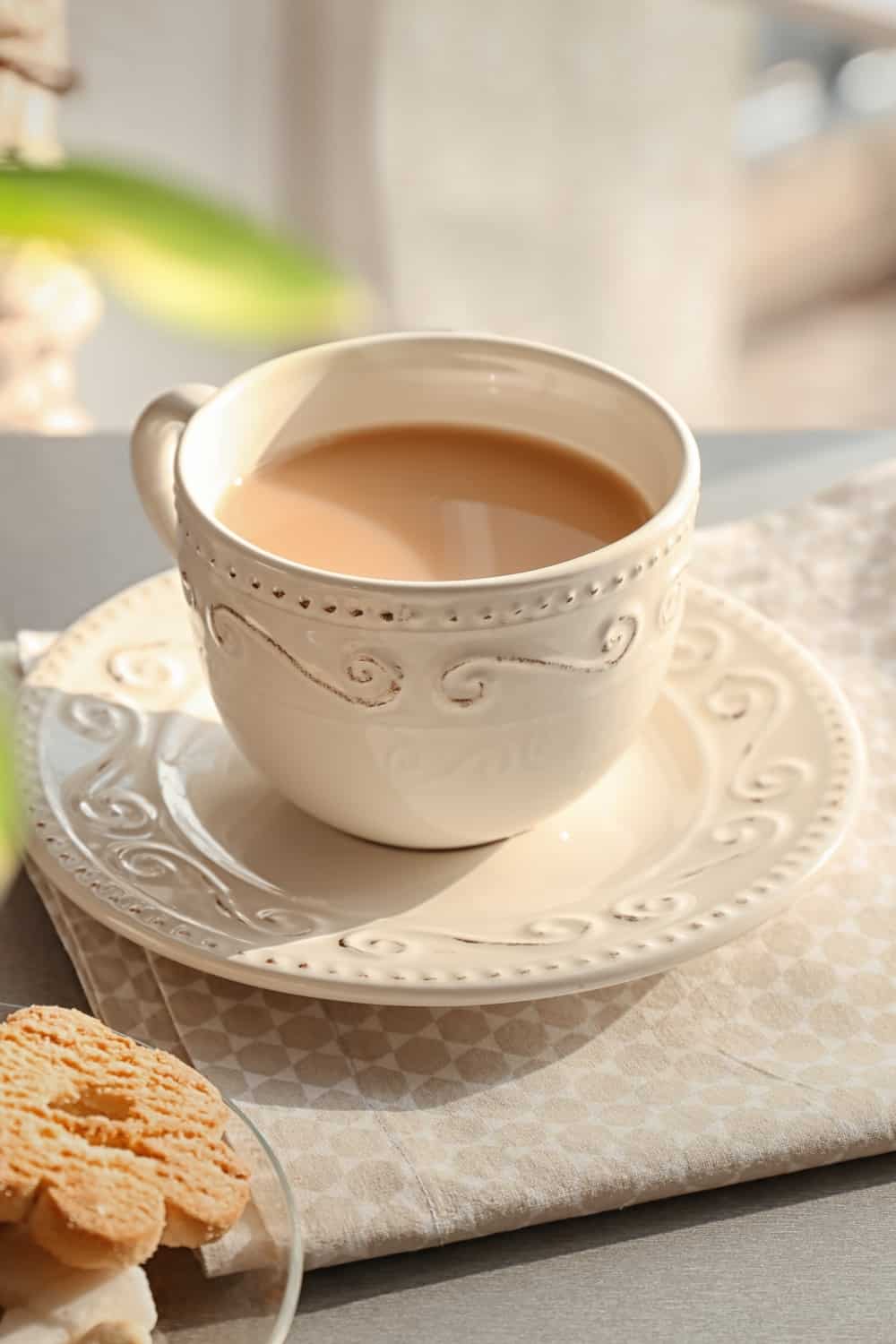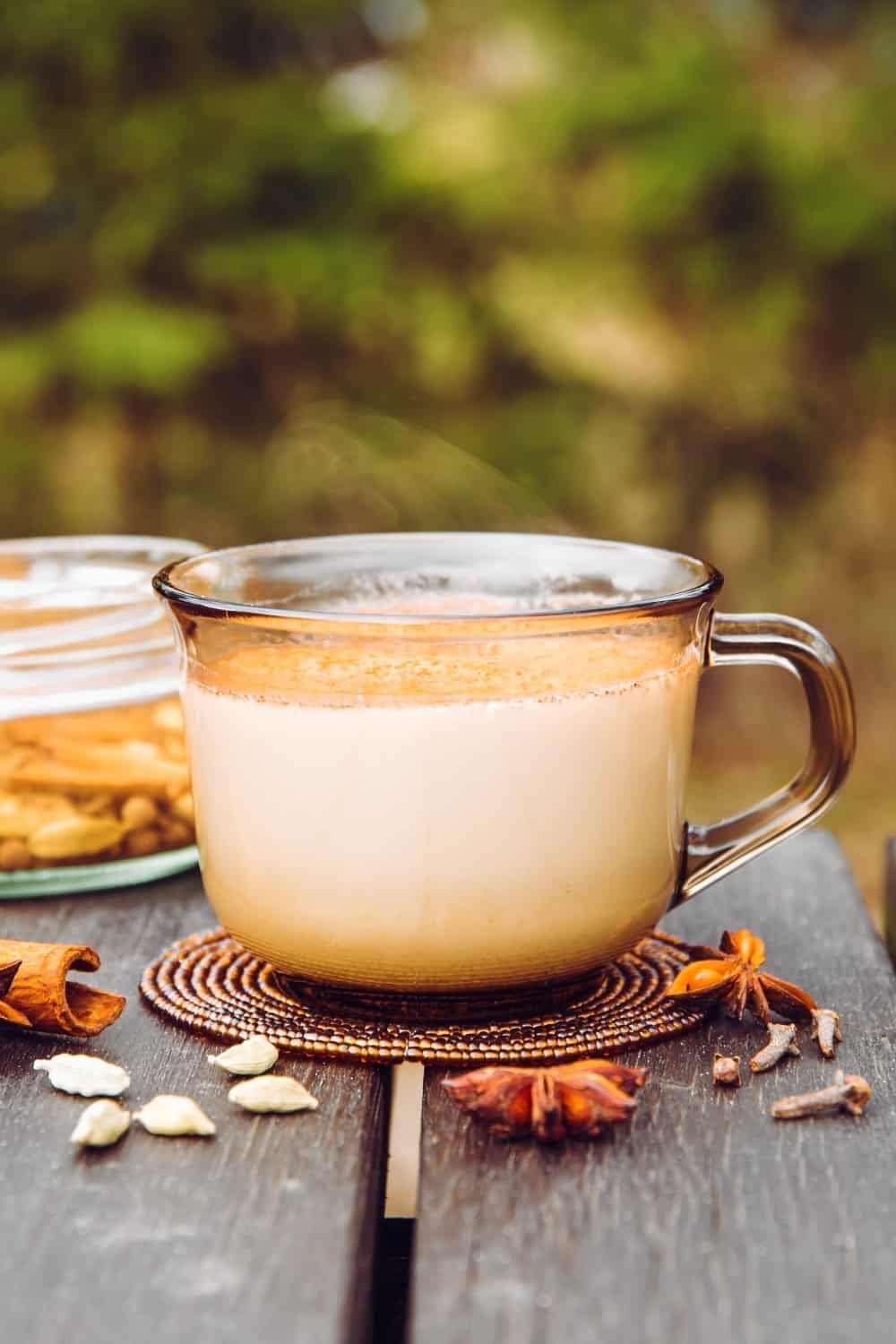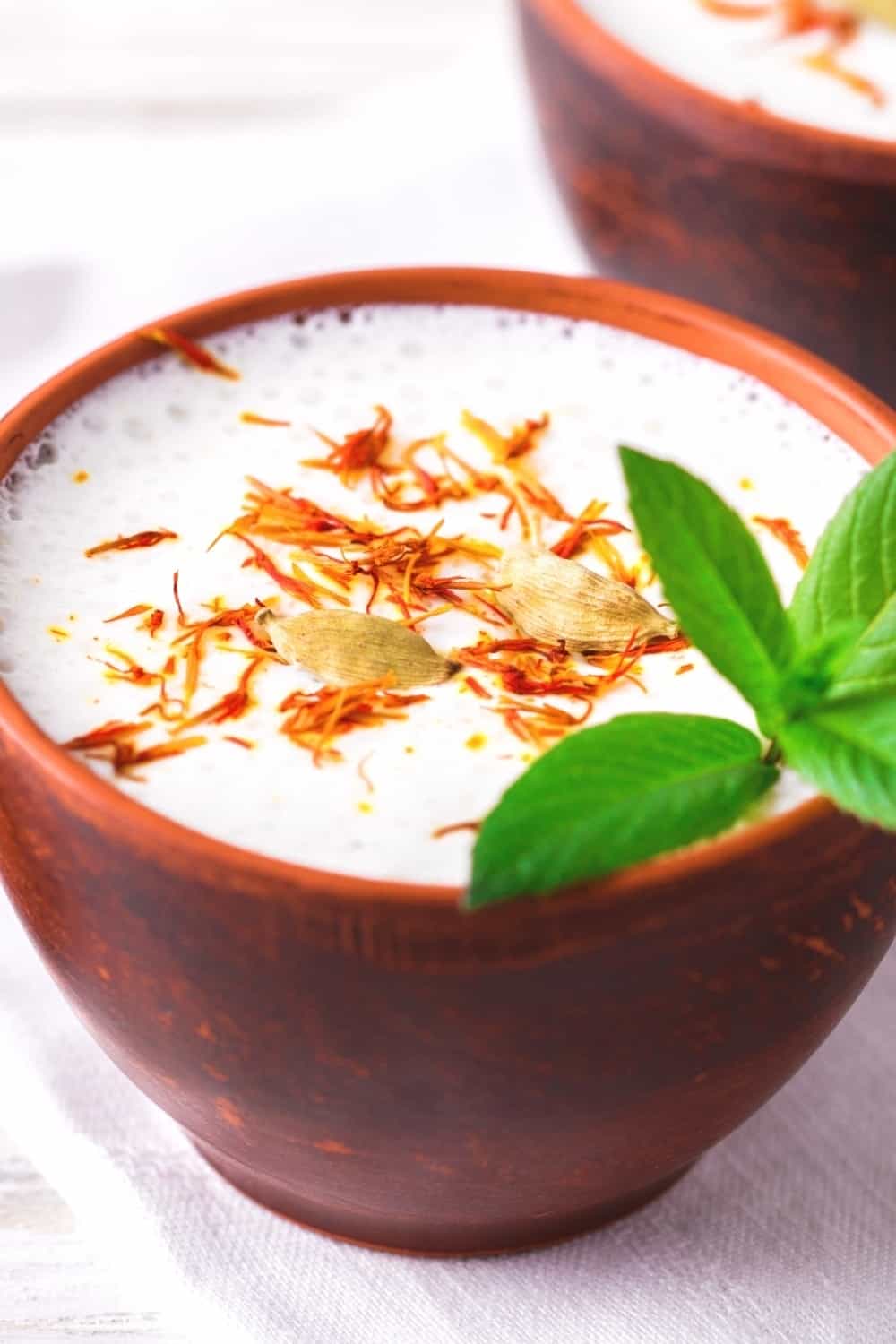If you are a fan of India, and especially Indian cooking, you must have heard about their ultimate beverage known as chai.
In Hindi, chai actually means “tea”, so chai can be referred to as any type of tea. Here in the West, chai is mostly considered a nutritious and flavorful combination of tea, spices, and sometimes milk, as well as additives.
But what does chai taste like? Well, the exact flavor profile of chai mainly depends on the ingredients used, but in general, it can be described as a combination of sweet and spicy flavors.
But since there are so many types of chai, there are also a lot of flavor variations, and those are going to be discussed in this article.
What Does Chai Taste Like Based On Ingredients?

The bases of chai tea typically include leaves of black tea, water, and various types of spices. With the addition of milk and some sweeteners, you will most often find these in your chai from a restaurant or coffee shop.
This type of chai is also known as chai latte here in the West. And coffee and tea lovers, as well as those who like to incorporate some spicy hints to it, like to enjoy it.
It represents the perfect balance of sweet, spicy, and creamy flavors that are impossible to resist.
However, nothing is limited when it comes to chai. Tea and spices are the bases that must be used, but the use of different types is very much allowed.
The milk, as well as different types of sweeteners and additional ingredients, can be used, but your ideal chai can thrive without them as well.
So, let’s see how chai and its flavor profile work considering these variations.
Type Of Tea
While tea is a must when it comes to making chai, black tea is not. It is traditionally used for making chai because it significantly contributes to the overall flavor profile of the beverage, but other variations can be used as well.
• Black Tea: As I already explained, black tea is the first choice. The tannins within it create a bitter taste that helps balance the sweetness of the other ingredients, such as sugar and honey.
Aside from that, it also provides a slightly astringent and earthy taste that perfectly complements the spicy notes of the chai spices.
I also have to emphasize that tannins are great for human health in general.
The most popular type of black tea used for making chai is definitely Assam tea, which is bold and malty. Other good choices include Darjeeling tea, Keemun tea, Ceylon tea, and Earl Grey tea.
• Green Tea: Green tea is very similar to black tea since they are both derived from the same plant, known as Camellia sinensis, but they undergo different processing methods.
Green tea is not as robust in flavor as black tea, and it has a delicate, grassy flavor and a subtle, earthy aroma.
So, if you want to make a lighter and more delicate version of chai, it is better to use green tea.
Green tea is a main ingredient in many other popular Asian beverages, including the famous boba or bubble tea.
• White Tea: Another type of tea derived from the same plant as black tea is white tea.
Like green tea, it also has a delicate floral flavor, but the minimal processing makes it even lighter.
If green tea is too strong for your taste buds, feel free to use white tea.
• Rooibos Tea: Rooibos tea is different from the previous types of tea because it comes from a different type of plant known as the rooibos plant.
Because of that, it will provide your chai with different flavors. Nonetheless, some people use it as an ingredient because it is caffeine-free. It is naturally sweet and nutty in flavor, which can be a great twist to your chai.
• Decaffeinated Black Tea: If you are up to a caffeine-free chai, but you don’t want to lose those specific bold flavors from black tea, you can try decaffeinated black tea.
It is slightly weaker in flavor due to the decaffeinating process, but it will still retain all of those flavors from the black tea, just without caffeine.
Various Different Spices

When it comes to making chai, it is all about spices. Spice is actually what makes chai special, adding those spicy hints and warm flavor. So below, the most popular types of spices used in chai are listed and explained.
• Cinnamon: It is the most commonly used spice in chai and it leaves the biggest impact when it comes to its flavor profile.
Cinnamon is a sweet spice that can add sweetness and rich, spicy flavor to your chai. It also has a warm, comforting flavor that can help balance out the bitterness of black tea.
Aside from that, cinnamon also has a strong, sweet aroma that can fill the room and make your chai even more appealing.
• Ginger: Similar to cinnamon, ginger also provides chai with that warm flavor and it can also balance out the bitterness of black tea.
It has a spicy, pungent flavor that can add pleasant heat to your chai, depending on the amount used in the recipe.
The only thing that it lacks is sweetness, but you can make up for it with various natural sweeteners, or you can just add a bit more cinnamon if you want.
• Cardamom: Cardamom is another spice that can provide your chai with natural sweetness without the need for adding additional sweeteners.
Aside from that, it also has a nice citrusy flavor that can add a bright, refreshing note to your chai.
Finally, its fragrant aroma can make your chai more appealing by stimulating your senses and even improving your mood.
• Cloves: Cloves are also one of the key spices used for making chai. They are known for their warm, sweet, and slightly bitter flavor.
In chai, cloves contribute by giving it a distinct earthy and slightly pungent flavor, which helps to balance the sweetness of other spices and gives the drink a more complex flavor profile.
Cloves also provide a warm and soothing sensation to your body, making chai a popular drink during the colder months.
With Or Without Milk

If you have read the introduction and the first part of this article, you will know that chai is traditionally made with milk.
And all of those chai lattes that you tend to enjoy in coffee shops contain milk. Whole milk is mostly used because it adds an appealing creamy texture and slightly sweet flavor that pair well with the spices in chai.
However, other milk varieties can be used. For example, in some coffee shops and restaurants, you can order chai with skim milk if you are on a low-fat diet because it has a lower amount of fat compared to whole milk.
Your chai will have a thinner texture and be less creamy, but the main flavors will still be dominant.
For those people who are intolerant to lactose, some non-dairy alternatives are also used in chai. Almond milk is one of the most popular and it will add a wonderful nutty twist and sweetness to your drink since the flavor profile of almond milk is all about that.
There is also soy milk which is a dairy-free alternative. It has a decently creamy texture, but its flavor is quite mild so it won’t affect the overall flavor profile of the chai.
Finally, coconut milk is the most popular dairy-free milk. It is quite creamy and rich in flavor. It has a slightly sweet and nutty flavor that pairs well with the spices in chai. It tastes like coconut, so you probably know what I am talking about.
If you are not a fan of any type of milk, whether it is dairy-free or not, there is a chai variety that doesn’t incorporate it at all.
Here in the US, it is also known as “black chai”. It has a stronger and more pronounced flavor.
The absence of the milk allows the spices to shine through, making it a perfect option for those of you who enjoy a stronger and more pronounced flavor profile.
Chai without milk also has a lighter and thinner texture, especially when compared to chai with milk.
Additional Ingredients

Finally, there are always some additional ingredients that can be added to chai, including the type of chai, flavor profile, nutrition, as well as personal preferences.
First, there are some other spices that you can add to your chai to enhance its flavor and make it spicier, if that is what you prefer.
One of the first that comes to my mind is definitely black peppers. It is not the spice that is almost always added to chai, but you can find it in many varieties.
It adds heat and spiciness to your beverage, and it also complements other spices by helping to balance and enhance them. This creates a more complex and nuanced flavor profile.
You will of course choose ground black pepper over whole peppercorns or cracked black pepper, as these two have too strong flavors.
Then there is the spice known as star anise, which has a sweet and licorice-like flavor that can add a unique sweetness and depth to your chai. So, if you don’t want to add additional sweeteners, you can always go with this natural option.
Finally, there is also nutmeg. Similar to star anise, you can also use it to add sweetness to your chai. Aside from that, nutmeg will also provide a warm flavor and aroma, and complement other spices very well.
Other additional ingredients that are usually added to chai are mostly sweeteners, and the most common is sugar.
However, if you want to provide your chai with some natural sweetness, it is better to add honey. You can also use agave nectar and stevia to achieve the same result.
One of the most popular sweeteners used in Indian cuisine is jaggery. It is made from sugarcane juice and has a distinct caramel-like flavor.
Unfortunately, it is not so easy to find it here in the West, so you can try it only if you have some in your pantry.
If you want to learn how to make your own delicious chai, the video below will show two ways to do it, one very simple and the other a little more complicated, but with amazing result.
Different Types Of Chai
As I already emphasized at the beginning, there are many types of chai, and consequently, a lot of different flavor profiles. I won’t go through all the types, but I will cover the most popular and important ones, and of course, their flavor profiles.
Masala Chai

Masala chai is definitely the most popular version in India, and it is a base for most types of chai and chai lattes here in the US.
The base of masala chai is black tea, alongside milk, spices, and sweeteners. The spices used in masala chai include the most common ones and those are cinnamon, ginger, cardamom, and cloves, but black pepper can also be added.
The blend of spices provides it with a strong spicy flavor and a strong black tea gives the beverage a rich and robust flavor.
Sweeteners like sugar, honey, or others are typically added, and they are there to balance out the spiciness and make a perfect balance of sweet and spicy.
Finally, masala chai is traditionally made with milk, which gives it a smooth texture and additional creamy flavor.
Kesar Chai

When you consider the ingredients used for making Kesar chai, you can barely notice a difference. Kesar chai is also made from black tea, spices, milk, and sweeteners.
However, there is one difference. Unlike popular masala chai, Kesar chai is flavored with saffron. That same saffron gives it a distinct aroma and flavor.
It also adds a subtle sweetness and earthy and floral notes to the chai.
So, Kesar chai has a more subtle and floral flavor profile compared to the bold and spicy flavor of masala chai.
All other flavor characteristics are almost the same, or at least very similar.
Kashmiri Chai

If you’ve ever seen someone drinking pink tea, you probably didn’t know that it is actually a type of chai, known as Kashmiri chai.
This type of chai is brewed with green tea leaves and a blend of spices. The tea is then simmered for a long time with baking soda and sodium carbonate, which actually gives it its signature pink color.
During the brewing process, milk, and sometimes cream, is added, which provides the chai with a smooth, velvety texture.
Compared to popular masala chai, Kashmiri chai has a more salty and savory taste, with a hint of bitterness from the leaves of green tea, and it also has a more creamy texture, which makes it more appealing to many chai lovers.
Lemongrass Chai

If you are really into chai, you must have heard about lemongrass chai. It is not as popular as the previously-mentioned types, but it certainly deserves to be discussed in terms of the flavor profile.
Lemongrass chai is a blend of black tea, lemongrass, and spices such as cardamom, cinnamon, ginger, and cloves. It doesn’t contain milk, which makes it less creamy than your typical chai latte.
However, it has its advantages. Aside from spiciness from spices and bold flavor from black tea, this type of chai is enriched with a zesty flavor of lemongrass.
In general, lemongrass chai is more bright and citrusy in flavor, which makes it quite refreshing, and that is its biggest advantage.
Vanilla Chai

Finally, there is one type of chai that is gaining huge popularity very fast. Vanilla chai is actually masala chai with the addition of vanilla, but the vanilla makes a huge difference.
It adds more sweetness and a specific sweet vanilla hint to the warm and complex flavor profile created by other standard ingredients incorporated into chai.
It also has a more creamy flavor profile than regular chai, which makes it more appealing to many people.
From my own experience, it tastes somewhat similar to taro tea milk, with the addition of those spicy hints.
So, if you are up to a sweeter and creamier version of your standard chai latte, vanilla chai might be your best bet.
What About Dirty Chai Tea?

It may not sound very appealing at first due to the name, but dirty chai tea is actually one of the most popular chai types, especially for coffee fans.
It is also known as “chai latte with a shot of espresso” or “chai latte with a kick” because it combines traditional chai spices with a shot of espresso or strong black coffee.
The base of this chai type is also black coffee, which provides a strong and slightly bitter flavor.
Chai spices are responsible for a warm and spicy flavor that is characteristic of every chai and milk and sweeteners are there for the creamy texture and extra sweetness.
On top of all that, espresso gives dirty chai an extra kick of caffeine and a rich, bold flavor. It also helps to balance out the sweetness of some chai spices, milk, and sweeteners.
All in all, if you want a healthier alternative to coffee that is at the same time richer and more complex in flavor, go for a cup of dirty chai tea.
What To Enjoy With Chai To Experience The Finest Flavors?

When it comes to pairing food with chai, there are really endless possibilities. However, I have to emphasize that savory food is mostly served with chai. But that doesn’t mean you won’t see some sweets alongside chai as well.
• Savory Snacks: As I already said, savory snacks are the best when it comes to enjoying chai. One classic pairing is chai and samosas, a South Asian fried pastry with a savory filling.
Some other savory snacks that pair well with chai include pakoras, vegetable fritters, and many others.
The spiciness of the snacks complements the warm and complex flavors of chai and that is the main reason why they go well with each other.
• Toast or Bread: When I say toast or bread, I actually mean toast or bread with butter or jam filling.
This is mainly because the sweetness of jam, butter, or any other type of sweet filling balances out the spiciness of the chai, which creates a great combo of sweet and spicy flavors in your mouth.
• Sweet Treats: Aside from savory dishes and snacks, chai can be a great addition to sweet things as well. Biscuits or cookies are a great pairing with chai.
The sweetness of the cookies complements the warm and spicy flavors of the chai, making for a delightful combo.
You can always pair it with chocolate if you are a choco fan and the result will be quite similar.
You can also add the wonderful flavor of cookie butter to your cracker and achieve a combo of sweet, salty, and spicy flavors.
• Fruits: Fruits are always a great choice. Whether they are fresh or dried, apples, bananas, or dates, are a healthy and refreshing pairing with chai.
You will experience a whole bunch of amazing flavors, from sweet and spicy to refreshing and slightly acidic.


